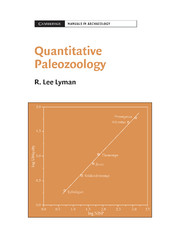Book contents
- Frontmatter
- Contents
- List of figures
- List of tables
- Preface
- 1 Tallying and Counting: Fundamentals
- 2 Estimating Taxonomic Abundances: NISP and MNI
- 3 Estimating Taxonomic Abundances: Other Methods
- 4 Sampling, Recovery, and Sample Size
- 5 Measuring the Taxonomic Structure and Composition (“Diversity”) of Faunas
- 6 Skeletal Completeness, Frequencies of Skeletal Parts, and Fragmentation
- 7 Tallying for Taphonomy: Weathering, Burning, Corrosion, and Butchering
- 8 Final Thoughts
- Glossary
- References
- Index
- References
References
Published online by Cambridge University Press: 05 June 2012
- Frontmatter
- Contents
- List of figures
- List of tables
- Preface
- 1 Tallying and Counting: Fundamentals
- 2 Estimating Taxonomic Abundances: NISP and MNI
- 3 Estimating Taxonomic Abundances: Other Methods
- 4 Sampling, Recovery, and Sample Size
- 5 Measuring the Taxonomic Structure and Composition (“Diversity”) of Faunas
- 6 Skeletal Completeness, Frequencies of Skeletal Parts, and Fragmentation
- 7 Tallying for Taphonomy: Weathering, Burning, Corrosion, and Butchering
- 8 Final Thoughts
- Glossary
- References
- Index
- References
- Type
- Chapter
- Information
- Quantitative Paleozoology , pp. 313 - 344Publisher: Cambridge University PressPrint publication year: 2008

